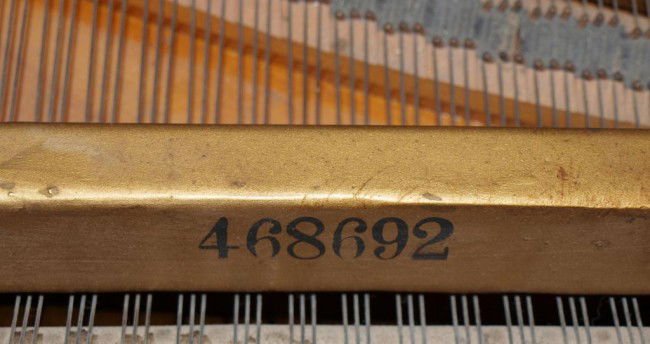

Insulation used in some pianos included vermiculite. Piano key hammer damper felt or cloth: the damper felt used under or behind piano keys may have contained asbestos, as cited above.Ĭement asbestos millboard: Does your Starr Remington model piano include the lighted music well unique to the Starr piano line? Without having found details about the construction of the light well, I pose that a manufacturer might have used cement asbestos millboard as a light well liner for fire safety.ĭampness controls in pianos: including cement asbestos millboard components used for the construction of pianos intended to survive in damp envronments and dampness removing systems in pianos such as "Hydroceel" tubes. Note that most piano key felts are and were fabricated from wool. Key hammer felt in most pianos is more typically organic fibers. Piano key hammer felt: The white piano key hammers (photo at left of a Starr piano interior) could have been made of asbestos as that product was listed by Rosato. Some Places to Look for Asbestos Material in a Piano While asbestos was widely used in many products at that time, the Cumberland photos we've seen, at least of piano exterior, use the expected wood case and hard white and black keys that may be ivory and ebony or celluloid, typically glued over wood. Some Starr piano owners and references refer to these labels as "models" of the Star piano line. The pianos were manufactured and distributed under the labels of Cumberland, Duchess, Gennett, Krell, Minum, Tayser, Royal, Pullman, Remington, Richmond, Coronado, Schmoller & Mueller and Starr Pianos. However it wouldn't surprise me if pianos made for humid climates didn't use asbestos millboard for some component parts.Īccording to our research, The Starr Piano Company was established in Richmond, Indiana in 1872.

I have not found a referral to asbestos specifically used within pianos themselves. Certainly where asbestos is a general concern, an inspection onsite by an expert will provide far more assurance about asbestos risks than we can provide by web discussion.Īsbestos was used in some piano padding. Thank you for the interesting Asbestos question about pianos. Asbestos Used In Pianos & Piano Parts & in Organs Reader Question: Did the Starr Piano company use any asbestos in any part / parts in there Star Remington Model? Reply: Here are some example photos of standard, non-asbestos piano materials found in Starr pianos as well as advice on where to look for asbestos products We also provide an ARTICLE INDEX for this topic, or you can try the page top or bottom SEARCH BOX as a quick way to find information you need. The article lists common uses of asbestos in these musical instruments and gives the brands and dates of manufacture of asbestos-containing pianos using Starr pianos as a key example.Īsbestos was used in some piano padding and may have appeared in several other forms such as fiber cement asbestos millboard in instruments built for use in humid climates. This article describes the common forms in which asbestos was used in pianos, player pianos, and organs.

We have no relationship with advertisers, products, or services discussed at this website.Īsbestos found in some piano and organ components: InspectAPedia tolerates no conflicts of interest. Information - Concerts, News,FAQs, Archives. Organs - Electronic (B3 etc.), Pipe, Theatre.
#1946 kimball baby grand piano professional#
Who's Who - Professional Pianists on Piano World Member Recordings - Non Classical Pianist CornerĮVENTS! Piano Concerts, Recitals, Competitions.įun Stuff! - Parties, Tours, Projects & More.įorum Members Parties, Tours, Cruises, & M. MY NEW PIANO or KEYBOARD! - Share Your Story! I personally would not pay more than $2K for a Kimball baby grand of that vintage regardless of condition.ĭigital Pianos - Electronic Pianos - Synths &a. Be sure to have a competent technician check it over for you - and advise you as to a fair price. It probably doesn't make much difference how old the piano is at this point (73 or 77 years). Please advise! Kimball may have stopped production for a time during the war, but between 19 they still managed to produce a good number of pianos. The piano is in good condition but do not want to pay $2,000 US if it is not worth that. I also understand that it is difficult to assess the value of a piano without close examination of numerous variables.
#1946 kimball baby grand piano serial number#
I understand Kimball stopped production between 1943-1945 due to WWII yet the online piano bluebook would seem to indicate the serial number fell in between these years. I am considering purchasing a used Kimball Baby Grand Piano (serial #470465) and would like to know the approximate age of this Piano.


 0 kommentar(er)
0 kommentar(er)
